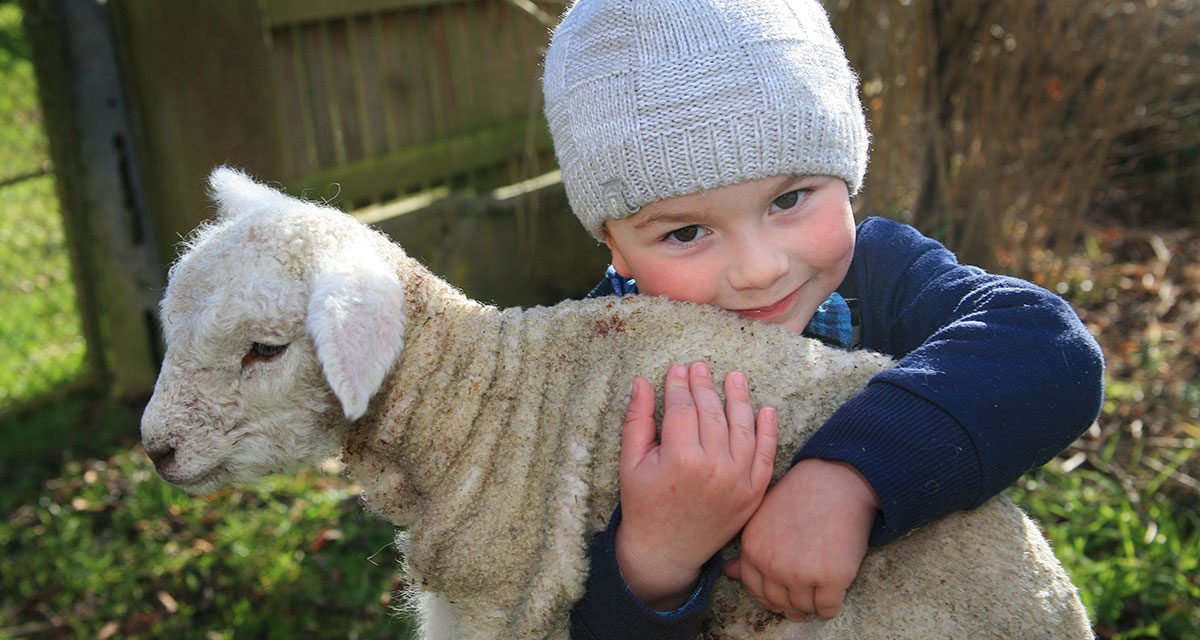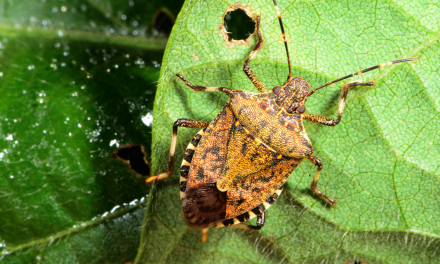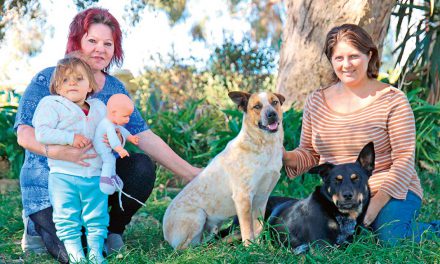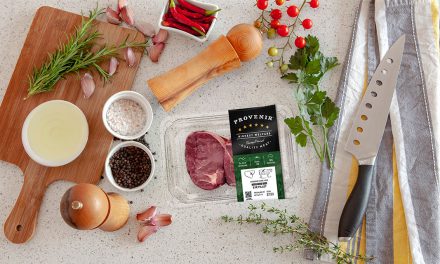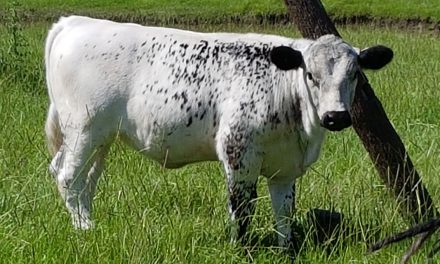There’s more to sheep than wool, meat and a lot of baa. Especially when you are trying to pick the best breed for a small property – and you don’t have a lot of experience. This month ROBYN SYKES has laid out the A (for Awassi) to W (for Wiltshire Horn) of sheep breeds and why you might prefer one to the other.
Sheep are versatile and relatively easy to handle and small farmers appreciate the hollow-horned herbivores as they are:
- Smaller than cattle.
- Easier to contain than goats.
- Much easier to shear than alpacas.
But that said it still doesn’t mean one-breed-fits-all.
So which breed is right for you?
Before you even think about deciding on a breed, first ask yourself: “What do I want to achieve?”
It could be wool. Or meat. Some breeds give you both. You can even opt for sheep milk.
Then you have to consider whether you will breed up numbers or buy in flock replacements? And infrastructure – how good are your fences, do you have a shearing shed?
If not, can you negotiate with a neighbour to use theirs? Are there mobile shearers in your area?
Once you know where you are and where you want to go, you can look for a breed that will achieve your goals.
1. Wool
If you want to produce the soft, lustrous and flexible fibre that graces catwalks around the world, there’s a one-word answer: Merino.
The sheep’s back on which Australia historically rode was really the Merino’s back.
Merino wool is top-shelf – and they grow a lot of it. From superfine to strong, each strain is suited to different climatic and geographic conditions.
Merinos, however, present some challenges for small farmers, especially with shearing. Talking to neighbours or contractors may solve the problem.
Flock structure is another challenge: a self-replacing flock needs to be large enough to allow significant culling to improve the genetics – trading wethers may suit better.
Merino wool can be categorised as ultra/superfine, fine/fine-medium, medium/strong and Dohne.
Fine and superfine Merinos
Superfine and fine wool growers are found mainly in the northern, central and southern tableland areas of NSW; the western districts of Victoria and the midlands of Tasmania.
Traditionally small-framed sheep, modern breeders have significantly increased both the body size and the number of kilos of wool shorn per sheep.
Medium wool Merinos
The large frames and plain bodies of medium wool Merinos graze in paddocks across Australia. They also make a solid basis for a crossbred lamb operation.
Strong wool Merino
The strong-wool Merino is an easy-care option in the hot, dry, semi-arid areas of Australia. With their large frames, plain bodies and open faces, they are heavy wool cutters.
Dohne
Easy care, mules-free Dohne flocks are dispersed from the mild wetter regions of the southeast to outback Queensland; Tasmania to south-west Western Australia.
2. Dual purpose
Border Leicester
The Border Leicester, distinguished by its Roman nose, produces more meat than a Merino and reasonable quality wool.
The first cross Border Leicester x Merino ewe is a good milker and with excellent mothering ability. When mated to a terminal sire (such as a Poll Dorset) the first cross ewe produces strong, fast growing lambs.
Aficionados such as Graeme Golder of Kegra Stud, Avondale, Temora, who breeds and sells first cross Border Leicester x Merino ewes, regards the second cross lamb as the ideal prime lamb.
“The best prime lamb is produced by putting a terminal sire – Poll Dorset or Suffolk – over a Border Leicester x Merino ewe. It produces the most uniform lamb.
“The wool value of the first cross BL x Merino ewe is worth more per head than a composite ewe.
“If you sell the first cross ewe portion, they are very valuable. The wethers are also bringing good money at the saleyards or direct to abattoirs.”
South African Meat Merino (SAMM)
The South African Meat Merino has breeding objectives weighted to slightly favour meat over wool. It is highly fertile, mates at most times of the year, and given the right conditions can achieve an eight-month breeding cycle.
Corriedale
Corriedales are a large framed, plain-bodied sheep that produce premium prime lambs when mated to terminal sires. In addition, they make excellent prime lamb mothers when mated to Merino ewes. The Corriedale produces bulky, high yielding wool. It particularly suited to the temperate, higher rainfall zones with improved pastures.
Coopworth
Coopworth are found throughout southern Australia. The selection emphasis has been on commercial meat and wool traits. Highly fertile, Coopworths are good mothers and milkers. Their broad wool has a white, soft lustre, excellent for home spinning, commercial apparel and carpets.
Texel
The highly-fertile Texel is scattered throughout southern Australia. It is a well-developed, evenly proportioned, heavily muscled and lean sheep. Rams can be mated to first-cross ewes or used as a terminal sire over crossbred ewes. The Texel is a good milker, even without supplementary feeding.
3. Meat
Poll Dorset
The Poll Dorset is Australia’s number one terminal sire. A short-woolled meat producer, modern Poll Dorsets are large, long and lean with excellent growth rates and muscling. They are highly fertile, capable of breeding at a young age and make good mothers.
Suffolk/White Suffolk/South Suffolk
The Suffolk family are fertile and useful as prime lamb terminal sires. Easy birthing, they are especially useful over maiden ewes. They are best suited to the safer rainfall and improved pasture areas of southern Australia.
4. Dairy
East Friesian
The East Friesian can produce lots of twins and triplets and plenty of milk to raise multiple lambs.
5. Fat tail sheep
Awassi
The placid and hardy Awassi is a multi-purpose animal, yielding meat, carpet wool and commercial milk.
Damara
The long-legged Damara is suited for meat production in the semi-arid areas of Australia. Easy care, they don’t need shearing.
6. Carpet wool
Elliotdale, Drysdales and Tukidales are carpet wool sheep that also make good prime lamb mothers. Shearing is required at least twice per year.
7. Shedding sheep
Dorper/White Dorper
The Dorper is hardy, fertile and will thrive equally in semi-arid and good conditions. They don’t require shearing, mulesing, crutching or tail docking. Its fleece is a mixture of hair and wool, which drops off if not shorn. Dorper require good fences, especially if you have wool producers as neighbours. They will not appreciate the hair from your Dorpers contaminating their wool clip,
Wiltshire Horn
Wiltshire Horns shed their short wool coat in spring, leaving a hairy undercoat for summer. Rams are useful as terminal sires in crossbreeding with other breeds for prime lamb production. Multiple births are common.
Wiltipolls
Wiltipolls are hardy polled sheep that completely shed their fleece annually. Good for prime lamb production.
8. Heritage breeds
Heritage breeds act as reservoirs of genetic diversity that may provide important fitness traits for future use in Australian agriculture.
Heritage Sheep Australia, set up in 2002, promotes 10 breeds that have contributed greatly to our sheep industry but have been reduced to small numbers: Cheviot, Dorset Down, Dorset Horn, English Leicester, Hampshire Down, Lincoln, Romney, Ryeland, Shropshire and Southdown.
“Heritage sheep hold a lot of attraction to small scale farmers,” HSA’s Steven French said.
“These animals are not your bland, boring sheep. They are distinctive and attract attention,” he said.
“Many of these breeds are getting low in numbers and are endangered and the smaller breeders are critical to the survival of many breeds.
“Many of the breeds, because they haven’t been ‘over-improved’, still retain the characteristics that made them popular in the first place.
“Characteristics such as superior meat flavour, wool that is loved by spinners and weavers and the ability to do well under a range of circumstances.
“No matter what your property is like, or where you live, there will be a heritage breed that suits your circumstances.”
Contact:
Heritage Sheep Australia
W: heritagesheep.org.au or rarebreedstrust.com.au/public/pages/sheep

